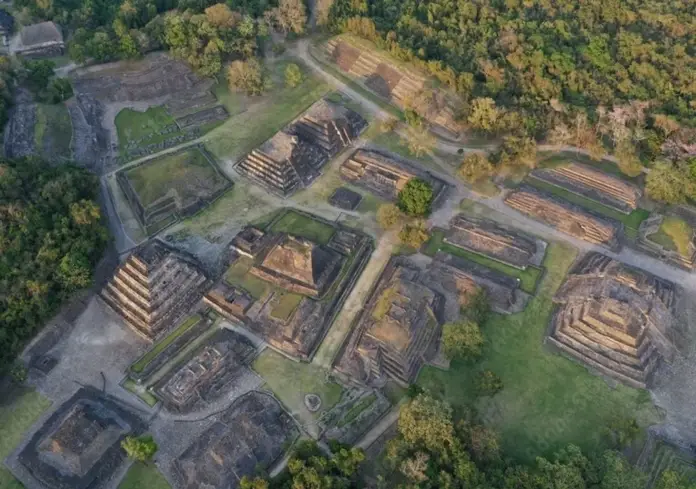According to the National Institute of Anthropology and History (INAH) of Mexico, the word “Tajín” is known in different meanings, in Totonac it means “the great smoke”, “the thunder” (which manifests itself in three forms, one of them is síkulan, or Tajín, which is believed to be the discharge that strikes down trees, that kills men and that precedes the lightning, the great glow.
Currently it is known as kawi’aksahila s’chik taji’n: “The house of thunder”.
Other experts believe that the pronunciation of the word has been transformed, since it was originally ta’jin, from the root ta’, which means “to be built”; jín, which means “constantly smokes”, is freely translated as “place of a group of temples from which smoke constantly comes out”, because copal was constantly burned there.
El Tajín archaeological zone
El Tajín is the The most important pre-Hispanic Mesoamerican city on the northern coast of the state of Veracruz. Its influence extends to the basins of the Cazones and Tecolutla Rivers from the Sierra Norte of the state of Puebla, where its influence is clearly seen in the archaeological zone of Yohualichan, to the coastal plain of the Gulf of Mexico.
Busyness
This niche shows a symbol that stands out throughout the city and makes it unique. Archaeologists claim that it could represent the shape of an electrical storm, hence it is also called “The Lightning City.” Copyright: © Ko Hon Chiu Vincent / UNESCO
From an urban planning point of view, El Tajín favored large open spaces delimited by temples and large construction slopes. Considered a ceremonial center of great importance among the inhabitants, it is believed that many of its deities emphasized the influence of the meteorological phenomena of that pre-Columbian era.
The city is also known as the home of the Hurricane God, since it was linked to severe weather.
In addition to the decorations with niches, reliefs and mural painting, one of the most interesting constructions is the so-called Pyramid of the Niches, so called because the panels that make up its facades were decorated with niches that make a total of 365, which is why it has received attention from scholars in calendars and worldview. Mesoamericans.
Another peculiarity of the city of El Tajín is that it is one of the places with the largest number of ball games: 17, which has been interpreted as a necessity in the face of the cultural diversity that, according to the time, could inhabit the city. Chronology: 300 to 1200 AD. Main chronological location: Epiclassic, 600 to 900 AD.
El Tajín

Increase in the price of admission to 100 pesos
At the beginning of the year 2025, the INAH announced through its official website, an update in the price of admission to this pre-Hispanic site. The entrance to the archaeological zone El Tajín has increased the cost of admission to 100 pesos, compared to the year 2024, which was 95 pesos.
There are five main accesses:
From the southeast, coming from the city of Veracruz, Veracruz
From the north, coming from the city of Tampico, Tamaulipas
From the west, coming from CDMX
From the southwest, coming from the city of Puebla, Puebla
From the south, coming from the city of Xalapa, Veracruz
Whatever the route, take the state highway that leads to the community of El Chote, it is approximately 10 kilometers to where the entrance of the archaeological zone is located. The visitor can reach the site by public transport.
Source: meteored




